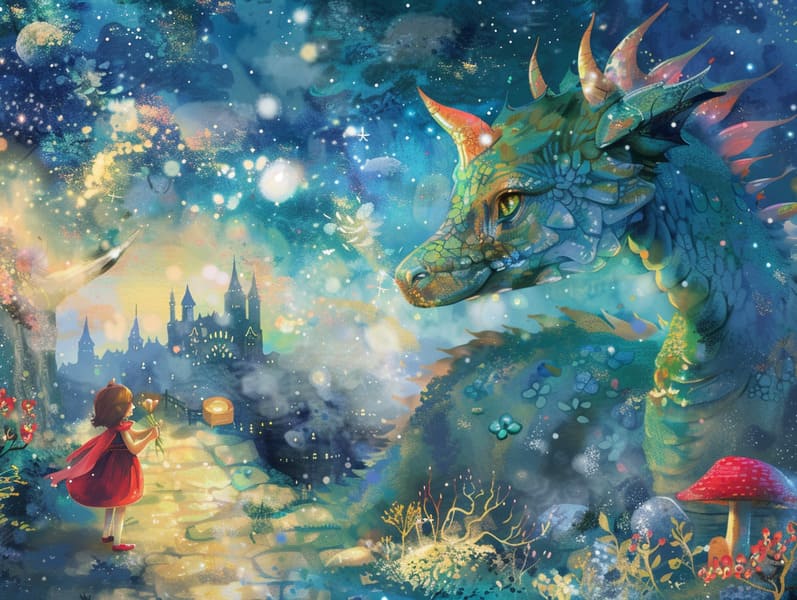The Inception of Short Fairy Tales with the Eternal Elegance.
The Inception of Short Fairy Tales with the Eternal Elegance.
Blog Article

Timeless fairy tales have long histories. These narratives have been passed down from one generation to the next millennia before they were ever recorded. They sprang from a variety of civilizations, including Eastern traditions. They were initially told among adults, often carrying themes and messages mirroring the societal norms and beliefs of the time.
The Grimm brothers, Jacob and Wilhelm, were among the first to compile and release many of these beloved narratives. Their collection, "Grimm's Folk Tales," included classics like "The True Bride," "The Bread Crumb Trail," and "Snow-White and Rose-Red," which have since become classics in the world of children's fairy tales. Similarly, the Danish author's magical tales, such as "The Sea Maid," and "The Little Duckling," have stolen hearts worldwide, securing their place in the pantheon of famous fairy tales.
Despite their ancient origins, these stories remain as meaningful as ever, especially as bedtime stories for kids. These enchanting tales are now available in multiple formats, including beautifully illustrated books, magical animations, and digital storybooks.
Their enduring popularity can be credited to several enchanting factors:
Valuable Lessons: Ancient fairy tales often offer important moral lessons. Stories like "The Tale of the Boy Who Cried Wolf" teach the significance of integrity, while "The Race of the Tortoise and the Hare" point out the virtues of persistence and unassuming nature. These narratives offer young ones clear distinctions between virtue and vice, building their moral compass in a gentle yet meaningful way.
Empathy and Awareness: Traditional fairy tales frequently present individuals facing difficulties and adversities, prompting listeners to connect with their struggles and boost their triumphs. For instance, "Beauty and the Beast" shows us the benefit of looking deeper to appreciate the true character of a person, encouraging empathy and discernment.
Cultural Understanding: Many old fairy tales are deeply ingrained in the cultural contexts from which they blossomed. Understanding these narratives can provide intriguing perspectives into different societies, encouraging a sense of international awareness and discernment.
Fantasy and Imagination: The fanciful elements in ancient fairy tales—magical beings—trigger children’s innovations. These narratives carry readers to mythical realms, inspiring fantasy ideas and a sense of marvel that persists a lifetime.
Traditional fairy tales are not only charming but also teaching. They function as fantastical tools in promoting various mind and heart abilities in young ones. When classic fairy tales are read aloud, they strengthen language skills by offering new words and detailed sentence structures. This practice also advances listening abilities and focus, as little ones pay close attention, anxious to see what happens next.
Furthermore, analyzing the themes and characters of timeless fairy tales can foster cognitive skills and critical thinking. Children are shown to find read more patterns, anticipate outcomes, and figure out cause and effect. These contemplations also advance kids verbalize their thoughts and feelings, cultivating their emotional intelligence.
In today’s online age, the abundance of web-based fairy tales has made these tales more acquirable than ever. Web platforms and apps make available extensive collections of Grimm's fairy tales that can be browsed or listened to anytime, anywhere. Fairy tales recited are particularly popular, presenting an fascinating method for little ones to appreciate these alluring stories. Read-aloud books and spoken videos carry characters and settings to life, often accompanied by captivating music and songs that enrich the narrative journey.
The unfading fascination of traditional fairy tales lies in their ability to modify to modern society while retaining their basic principles. Contemporary versions of these fairy tales often incorporate more inclusive characters and modern settings, making them accessible to today’s audience. However, the key lessons of valor, empathy, and honesty remain unchanged, continuing to affect listeners of all ages.
Fairy tales also offer a sense of coziness and homeliness. They bequeath a coherent narrative with a straightforward beginning, middle, and end, often concluding with the conclusion of conflicts and the triumph of morality over wickedness. This steadiness can be relieving for little ones, extending a sense of steadiness in an dynamic world.
Timeless fairy tales continue to spellbind and train new generations, maintaining their grace and meaningfulness in modern society. As nighttime stories for kids, they render a perfect blend of captivation and insight, facilitating moral values, empathy, and creativity. The prevalence of free fairy tales online and the commonness of fairy tales narrated validate that these classic tales remain accessible to new generations.
By guarding and recounting these stories, we continue to extol the rich tapestry of tradition and cultural heritage. Whether you are discovering a gorgeously illustrated book, seeing a web collection, or hearing an voice book, the loveliness of classic fairy tales is always within reach. These stories highlight of the timeless strength of tales and its ability to hold us together across eras and regions.
Even if you are accessing a beautifully illustrated book, accessing a virtual collection, or listening via an voice book, the appeal of old fairy tales is always within reach.
These narratives highlight of the everlasting impact of storytelling and its ability to draw us together across centuries and lands, forging a link that captivates and teaches alike.